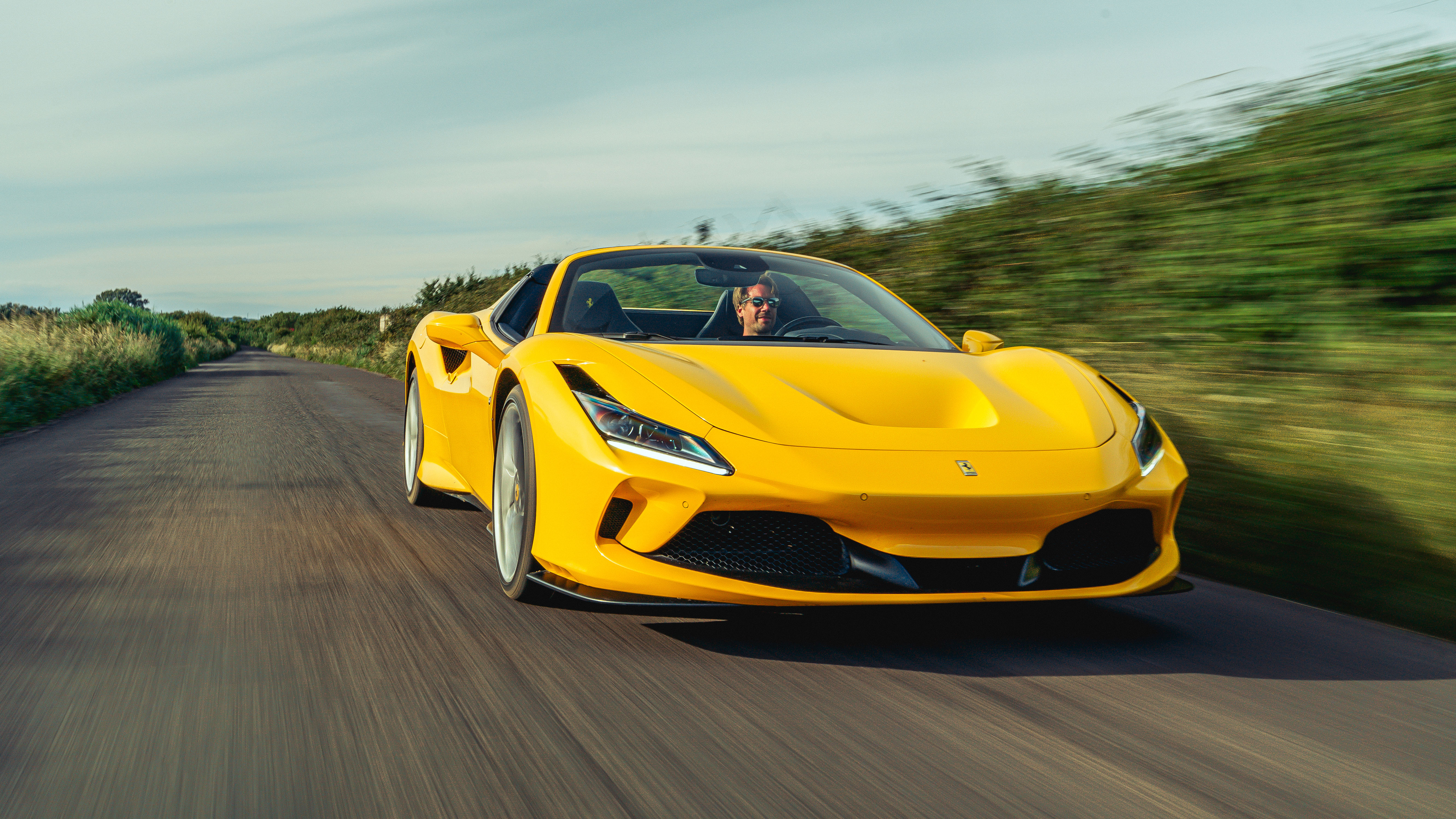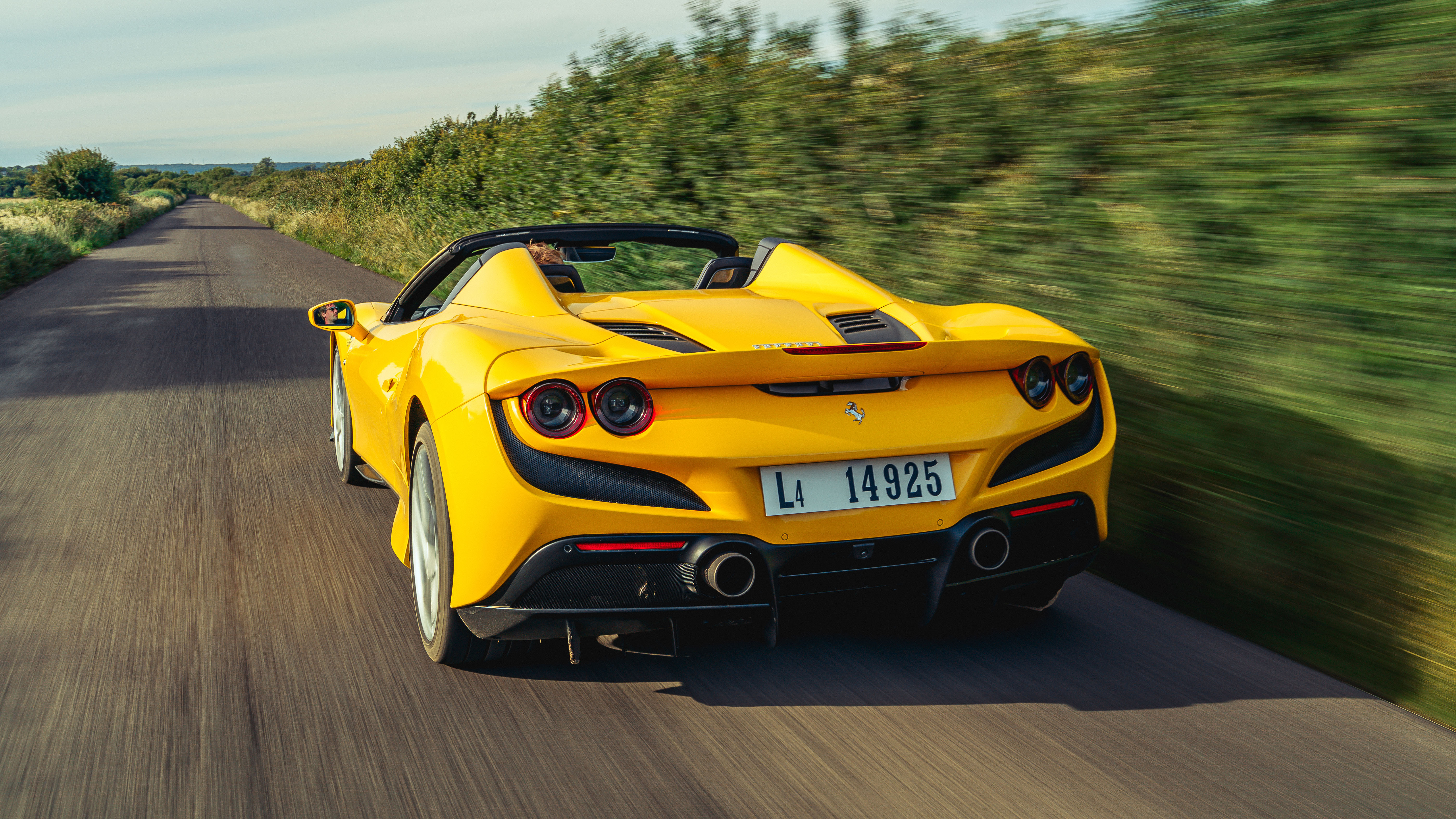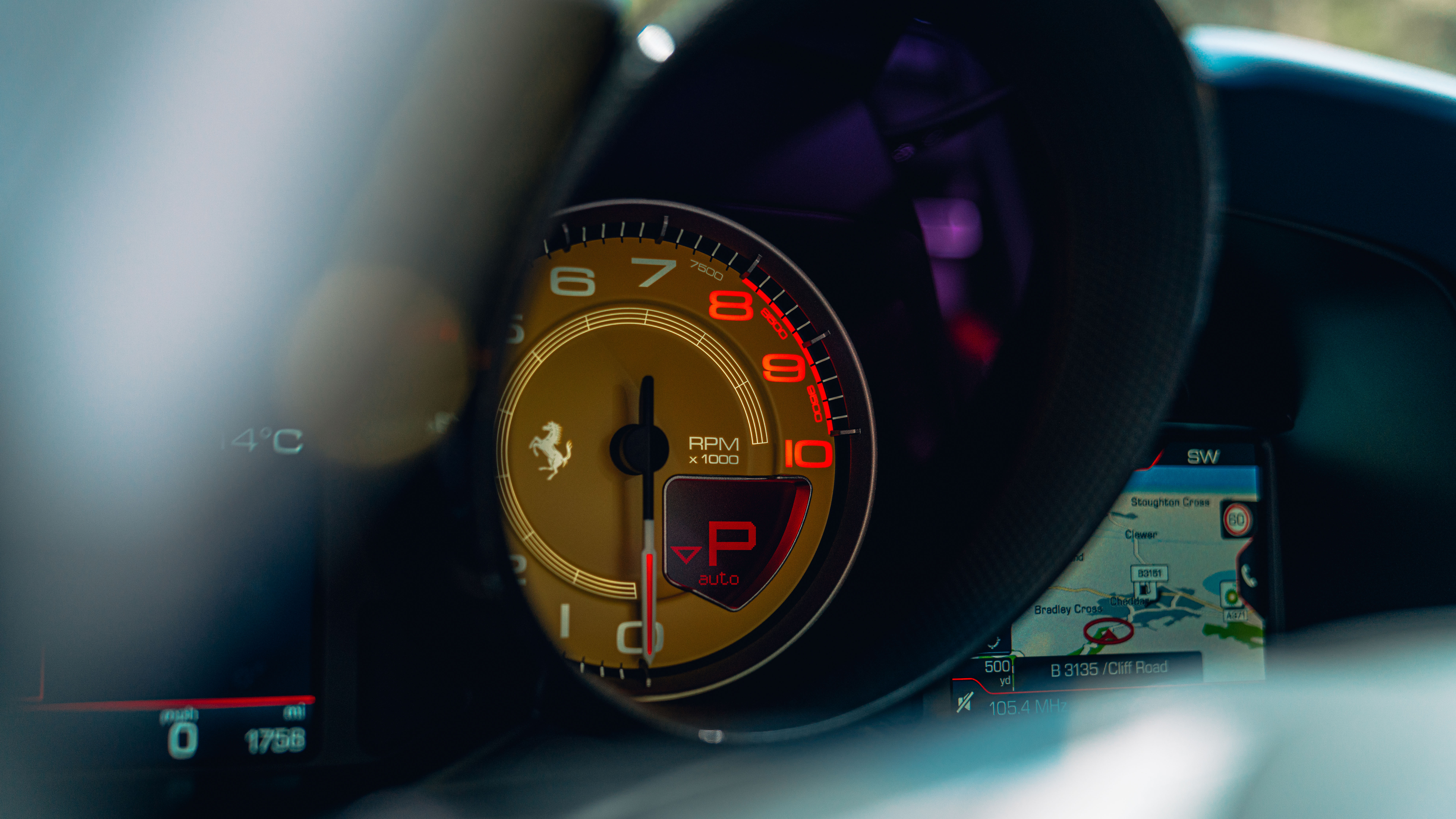
Ferrari F8 Spider review
Driving
What is it like to drive?
How does Ferrari do it? And perhaps more pertinently, why does no-one else do it? Surely rivals must have stripped this engine down and discovered its secrets? Or perhaps it really is witchcraft. Whatever the truth, there isn’t another turbocharged engine on the planet like this. Nothing that is as responsive and immediate to the throttle. It is, of all the turbocharged engines out there, the only one that can rightly claim to have banished lag.
Others have good response high up the rev ranges, where the turbos are already spinning furiously, but the F8, like the 488 before it, responds as promptly and dramatically to the throttle at 2,000rpm as a naturally aspirated car. This means it’s fearsomely fast and is never caught unawares. Even in fifth at 30mph it kicks hard. This unparalleled drivability is the most important thing about this engine – over and above its power figures or the sound it makes.
It is, of course, bananas fast: 710bhp working on a kerbweight of around 1,500kg (Ferrari quotes a 1,400kg dry weight for the Spider, and regular kerbweights are about 100kg more) has dramatic effects, but over and above the way the F8 responds and pins you back, is the torque delivery. Once again Maranello has engineered it to limit the torque in lower gears, which means that each time the next pops home (which it does with a sneaky clutch surge) the acceleration seems to increase. The effect is an utterly relentless headlong rush for speed. There’s no time to breathe, no time you’re not in the flood’s fastest flow. It leaves you breathless and trembling. And often unaware of just how fast you’re travelling. The dominant yellow centre dial is given over to revs and gear info, so unless you’ve got the correct display showing in the flanking screen, the speed reading is a footnote next to the remaining range.
But every engine has an Achilles heel. Here, that’s noise. A Ferrari V12 sings and soars, but the twin turbo V8 drones. It’s just not a very exciting thing to listen to. The volume is about right – you can hear it roof down when you want to, and it lowers to a background hum when you’re coasting along – but the actual tune it plays just isn’t stimulating.
While we’re talking drawbacks, here’s another. The aluminium chassis isn’t rigid enough. Hit a lateral ridge in the F8 Spider and you get a shiver up the car’s spine that makes it as far as the steering wheel. And yet this structural shudder doesn’t disrupt the lines of communication. Normally shake like this dilutes feedback as the chassis flexes when you load it up through a corner. But here that doesn’t really happen. The F8 is a responsive, sparkling thing to drive. You always know exactly what’s going on with the steering and are fed constant information through the suspension. Yes, sometimes those signals are polluted by this small wobble, but they don’t stop the F8 being a complete hoot to drive.
Combine the super-alert engine with a chassis that may not be flawless in its rigidity, but wants to show you a good time, and it’s a recipe for fun. It even rides tolerably well.
And that last point is important, because a super-roadster has a different brief to a hardtop supercar. It needs to be able to potter around easily, roof down, just indulging its occupants in the sights, sounds and smells around them. The F8 is good here. In Bumpy Road mode the suspension is detectably gentler, actually permitting some body roll. The cabin is reasonably well protected from wind, and the car flows along effortlessly surfing the instant torque.
There are tricks up the F8’s sleeve, newest among them, and borrowed from the 488 Pista, FDE+ (Ferrari Dynamic Enhancer), which uses software to manage the brakes through and exiting corners. You don’t have to be anywhere near the pedal, just have the manettino pointing to Race mode or above and the car just gently and individually applies the brakes to improve your line. Can’t say I noticed it working, which probably tells you all you need to know. Just be aware that if you do clog the loud pedal mid-corner, it’ll be the new 6.1 Side Slip Angle Control that saves you, not FDE+.
Or, if you’ve elected to switch the traction off, you’ll be praying your responses are as good as the car’s and the brakes understand the urgency of the situation. Since they’re whopping 398mm carbon ceramic front discs, they will.
Overall, it does feel like Ferrari has integrated the components better, so they work together more harmoniously. The steering, which could feel over eager in the 488, seems better mannered here, more in tune with the chassis.
Featured

Trending this week
- Car Review
BMW 1 Series
- Top Gear's Top 9
Nine dreadful bits of 'homeware' made by carmakers






